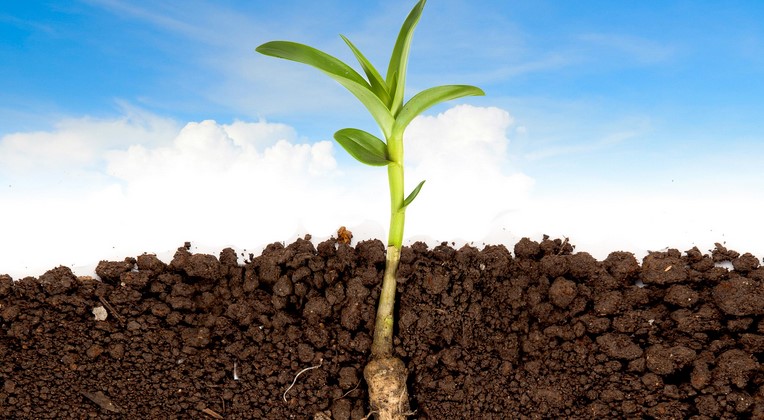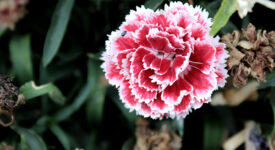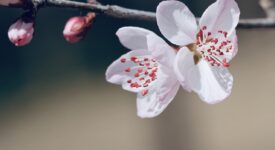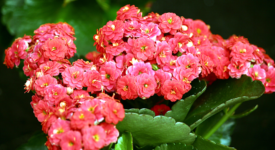The first step in creating a successful garden is selecting appropriate plants. You can add grit and organic matter to the soil to help improve water retention. While there are huge quantities of soil amendments available, you must consider your existing conditions and work within them. For example, your garden may be prone to drought, and a drought-tolerant plant is best.
There are lots of plants that love dry soil. Many people think all plants like moist, rich soils, but that’s not true. There’s a special kind of plant for just about every type of soil out there. Dry soil is great for avoiding pests and diseases, but these types of plants can still need a bit of help in the garden to survive if you don’t want them to look shabby and do poorly over the summer months! In this article we’re going to cover what dry soils are, what best suits them, and how you can grow them easily without worrying about pests or diseases.

Yarrow
Yarrow is a perennial that grows in zones 3 through 9. Flowering is most common in early summer to early fall, although plants grown in warmer areas tend to start flowering earlier. In cooler climates, flowering may continue well into fall. Yarrow’s tiny florets vary in color from white to pastels to bright colors. Some cultivars also feature contrasting center stamens. The plant’s finely divided leaves are aromatic and release a pleasant herbal fragrance when crushed. It is not harmful to deer or rabbits, and its blooms are not eaten by these creatures.
Yarrow is best grown in dry soil, but it will thrive in moist soil as well. It is important to use a soil with good drainage. If your soil is too wet, your yarrow plant may struggle to get the necessary nutrients to grow.
Mexican fleabane
Mexican fleabane is native to Central and southern Mexico and thrives in dry soil. Although this plant can be planted in containers, it prefers free-draining soil with crevices or gaps. Regular watering is important to avoid disease and infestation, as this plant self-seeds.
This plant can tolerate dry soil, as long as it has ample sun and a well-drained soil. It grows well in rock gardens and Mediterranean-style gardens. It can be grown in raised beds, hanging baskets, and walls. The plant is an excellent choice for pollinator gardens, too.
Cobweb houseleek
Cobweb houseleek plants are very easy to grow in a trough, container or rock garden. These plants form tight clusters of rosettes. These plants grow well in full sun and have a shallow yet fibrous root system. They can be propagated by root offsets.
Cobweb houseleek plants do not require much watering. They tolerate partial shade to full sun. In full sun, their leaves turn a purplish color. In partial shade, they retain their green color. Watering them frequently during the summer season is not required. In winter, watering them less frequently is sufficient.
Lavender
In order to grow lavender successfully, you need to give it adequate water. The best time to do this is after the lavender flowers have bloomed, and before snowfalls. This is important because lavender dislikes being repotted. If the plant is not pruned before the first snowfall, it will die. Then, in the spring, prune the plant to a compact shape. This will help keep the plant away from the summer heat and humidity.
Unless you live in an arid region, lavender will not grow well in dry soil. However, it does need a lot of water during its first six months, as this will build a healthy root system and help the plant survive longer dry periods.

Passion flower
Passion flower is a slow grower, and you should prepare your soil for germination by sowing the seeds in a container filled with damp potting mix. After this, cover the seeds with a plastic bag to keep moisture. After a few weeks, they should germinate. If you have not soaked the seeds, you can use a grow light or a fluorescent bulb to speed up the germination process.
While passion flower can be grown in various soil conditions, it grows best in a mix with lots of organic matter and adequate drainage. Mulching with coir or peat can help maintain moisture and improve root growth. Additional soil amendments such as pumice and perlite will also improve water retention. Avoid planting passion flower in heavy clay soil as this will lead to root rot.
Okra
Okra is a fast-growing plant that thrives in warm climates. It is easy to grow and does not need a lot of space. You can harvest okra when the seed pods are two to three inches long. It is important to pick the okra pods every day or every other day to avoid bruising. The pods should be picked before they turn black.
Okra is drought-tolerant, but it does need a steady stream of water to thrive. During the summer months, it is best to water early in the morning. This is because the early morning sun dries off any excess water.
So there we have it, just a few ideas for improving your plant’s lot in a less-than-ideal soil situation. And I hope that you’ll agree with me that even if you have less than perfect soil, it doesn’t mean that you have to have less than perfect plants.







